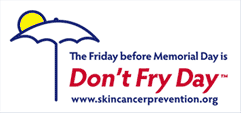Stay Safe in the Summer Sun
Although everyone is aware of skin cancer and the role of sunscreen in helping to prevent it, the details that will save lives are often surprising even to savvy consumers.
Did you know that some sunscreens protect against only the sun's ultraviolet B (UVB) rays and not its ultraviolet A (UVA) rays, which also contribute to skin cancer? That no sunscreen completely blocks UV radiation, and that other protections are needed too? That no sunscreens are waterproof?
As summer approaches, the Food and Drug Administration (FDA) has taken steps on multiple fronts to protect consumers from the skin damage that can be caused by too much exposure to the sun.
New Sunscreen Labels
This is the first summer in which FDA's new rules governing sunscreen labeling are in effect. Using the latest available science, in 2011 the agency established testing and labeling requirements, which became final in December 2012.
One of the most important requirements: Testing and labeling that identifies sunscreens that are "broad spectrum," meaning they offer protection against both UVB and UVA rays. All sunscreen products offer protection against UVB rays, which are the primary cause of sunburn. But both UVB and UVA rays contribute to sun-induced skin cancer and premature skin aging.
"Based on scientific studies, we have determined that broad spectrum sunscreens with a Sun Protection Factor (SPF) of at least 15 can help reduce the risk of sun-induced skin cancer and premature skin aging when used with sun protective measures, as directed," said Reynold Tan, Ph.D., a scientist in FDA's Division of Nonprescription Regulation Development. "We hope consumers use the information to make good choices."
Under final FDA regulations, products that pass a broad spectrum test can be labeled "broad spectrum" on the front of the product.
Sunscreens that are not broad spectrum or that lack an SPF of at least 15 must now carry a warning: "Skin Cancer/Skin Aging Alert: Spending time in the sun increases your risk of skin cancer and early skin aging. This product has been shown only to help prevent sunburn, not skin cancer or early skin aging."
And FDA's regulations now require that if a product's front label makes claims of being water resistant, it must designate whether it's protective for 40 or for 80 minutes while swimming or sweating. Additionally, manufacturers may no longer make claims that their sunscreens are "waterproof" or "sweatproof."
Products may no longer be identified as "sunblocks" or claim instant protection or protection for more than two hours without reapplying.
Don't Fry Day
 |
FDA is supporting "Don't Fry Day." The awareness campaign is sponsored every year on the Friday before Memorial Day by the National Council on Skin Cancer Prevention. The Environmental Protection Agency (EPA) also supports the effort.
The message:
- Slip on a shirt.
- Slop on broad spectrum sunscreen with SPF 15 or higher.
- Slap on a wide-brimmed hat.
- Wrap on sunglasses.
For more information on "Don't Fry Day" and skin safety, visit: www.skincancerprevention.org.
Other Sun-Safety Tips
- Apply sunscreen at least 15 minutes before sun exposure.
- Although people with pale skin and light hair are most vulnerable, people of every shade are susceptible to sunburn and skin cancer
- Keep infants under six months out of the sun.
- No sunscreen stops all UV rays. Limit sun exposure, particularly between 10 a.m. and 2 pm., when the sun's rays are strongest
- Maintain caution on overcast days because UV rays can penetrate cloud cover.
- A variety of factors cause different amounts of UV radiation to reach different parts of the Earth at any given time. You can find the strength of solar UV radiation on a given day in a particular zip code at a UV Index report issued by the U.S. Environmental Protection Agency and the National Weather Service.
- Reapply sunscreen at least every two hours; more often if you are swimming or sweating.
Proposed Regulations
FDA is considering whether additional changes are needed to sunscreen regulations, including requiring that sunscreens with an SPF value of more than 50 to be labeled simply "SPF 50+." FDA has no data demonstrating that sunscreens with an SPF of more than 50 provide additional benefits compared to those with SPF 50.
FDA has also requested additional data from manufacturers of sunscreen spray products to ensure their effectiveness and to determine whether they present a safety concern if inhaled unintentionally. In both cases, FDA is currently evaluating information received in response to public opportunities for comment.
Return to FDA Consumer Articles
